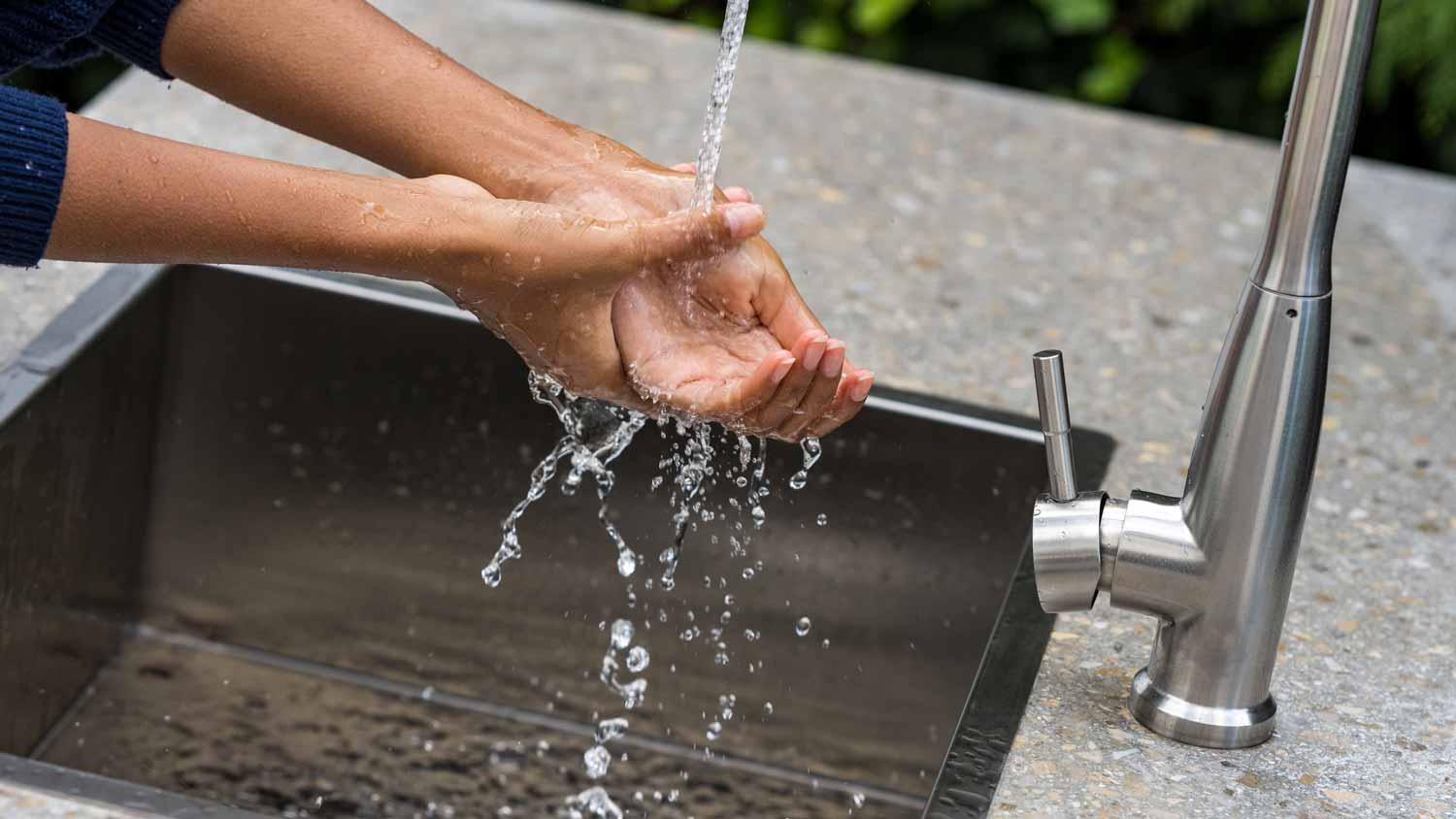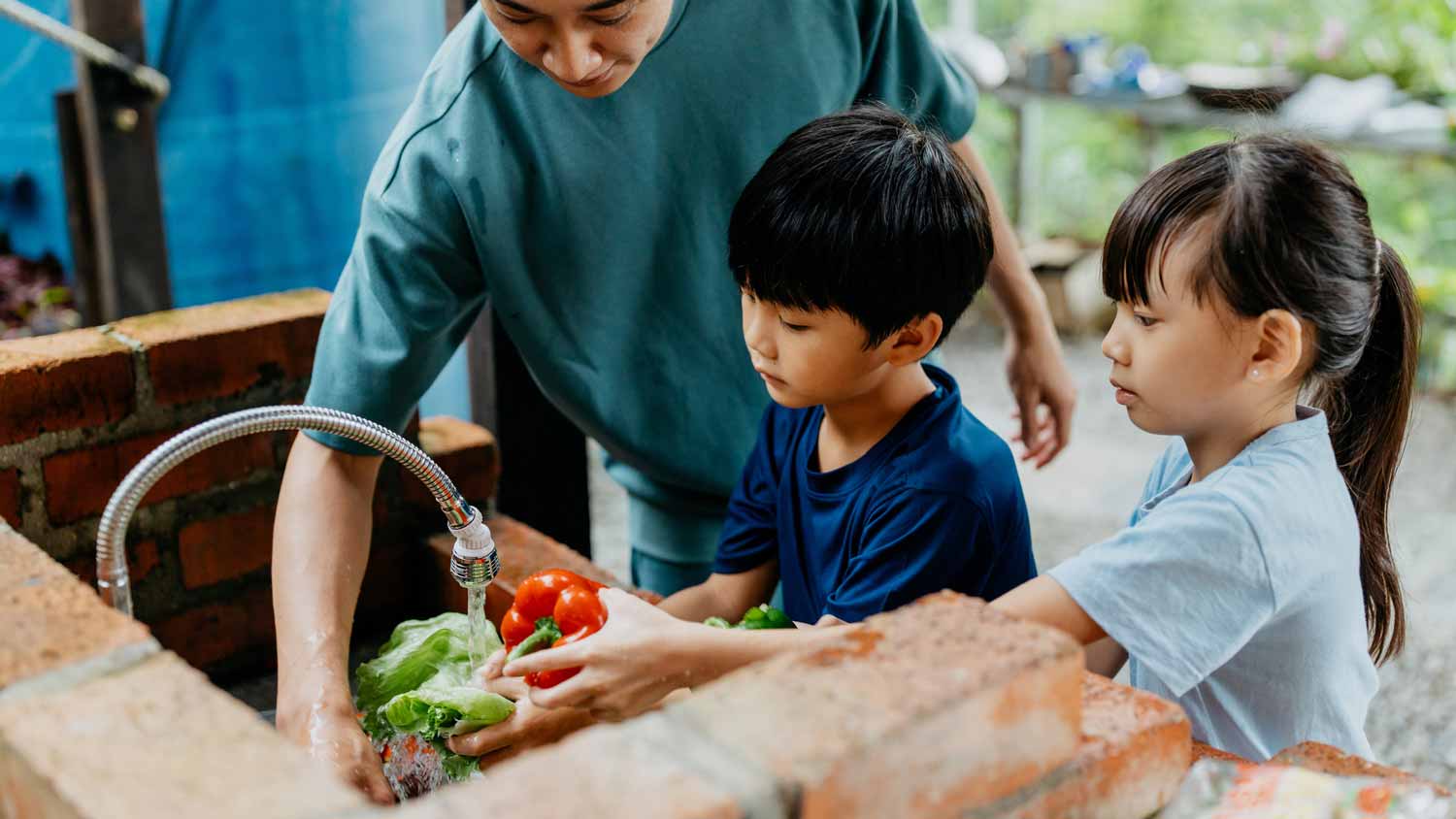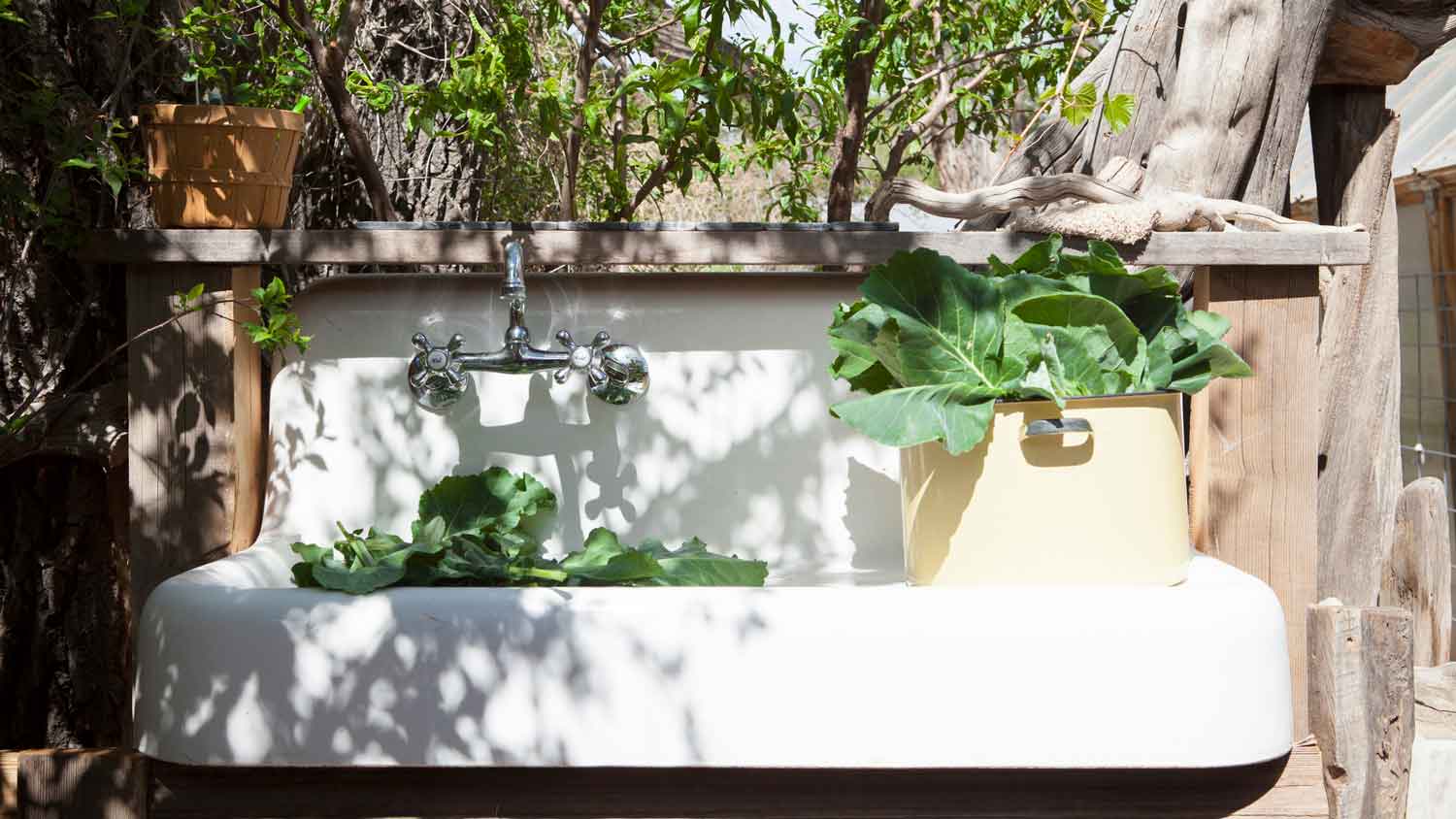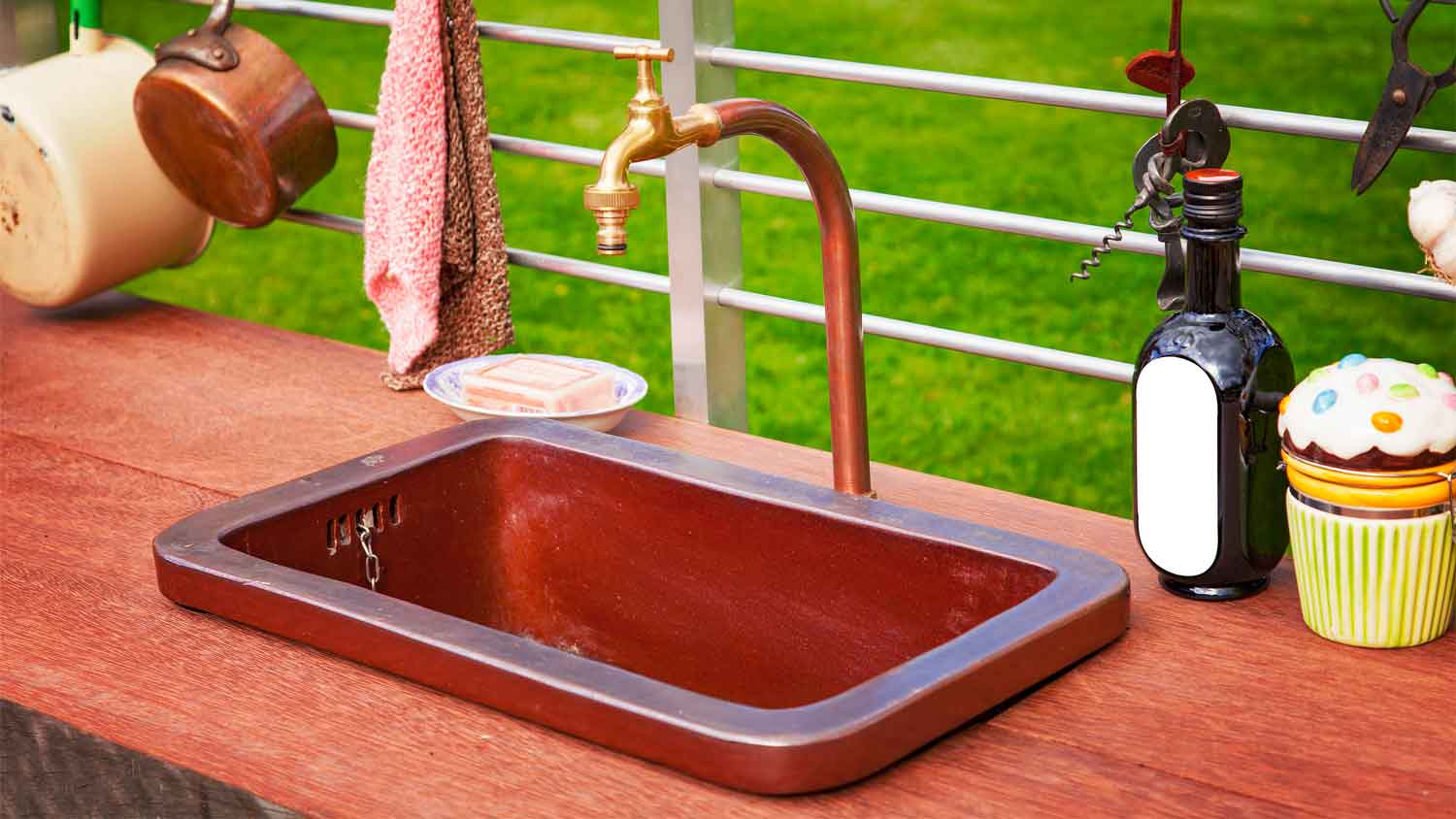7 Outdoor Sink Ideas to Make a Splash in Your Garden Kitchen
Avoid throwing money down the drain with these outdoor sink tips


Including a sink in your outdoor kitchen design makes sense. This convenient, multifunctional fixture makes alfresco dining food prep painless and is helpful for hand washing and tool cleaning when you're doing a spot of gardening.
Don’t opt for style over substance when selecting your sink. This practical and hardworking design feature has to handle changeable weather, greasy bbq residue, and garden grime.
Not sure where to start? These seven outdoor sink ideas will help narrow down what works functionally and fashion-wise for your backyard kitchen.
1. Select a Sink That Can Take a Beating

Outdoor sinks need to be tough. They face exposure to extremes in temperatures, damp conditions, and, depending on their location, harsh UV rays.
A classic, non-porous porcelain sink might seem like a durable option, but pouring scorching hot water from the faucet into the basin on a freezing day could crack the surface. And porous concrete sinks can crack during winter freeze and thaw cycles.
A classic outdoor sink material is marine-grade stainless steel. Resistant to rust and extremes in weather, this sleek finish is versatile, tough, and available in a wide range of designs to suit all budgets. Also, maintaining stainless steel sinks is a breeze, making keeping your outdoor kitchen clean easier. Opt for a brushed steel finish if you want to minimize scratches and prevent reflective glare from the sun.
2. Pick a Practical Basin Size

The average outdoor kitchen costs $15,000 to build, so it pays to consider every design element carefully, including the size of the integrated sink.
Unless your outdoor kitchen sees some serious cooking action or you plan to use it to rinse off your mucky pup, you might not need or want a standard 33-inch sink. But one that’s still large and deep enough for occasional meal prep and dishwashing makes sense in most instances.
Double-sinks take up a fair amount of space but are helpful if you want to keep one side for prepping raw meat for grilling and the other for dishwashing. If you do big drinks parties, it also makes rinsing off glasses easier. When space is at a premium, and you mainly invite a few friends for drinks rather than dining, a compact, round 15-inch bar sink could do the job.
3. Don’t Forget About the Faucet

The type of kitchen faucet you need shouldn’t be an afterthought when mulling over outdoor sink ideas. A single-handle design is convenient and space-saving and might be all you need if your plumbing only provides cold water. An elegant two-handle faucet fits with traditional kitchen designs. And if you want the most functionality, invest in a sprayer function that allows you to direct the water flow. It’s ideal for watering container plants, filling big jugs of water for the table, and cleaning mucky pet paws.
4. Save Money With a Vintage Sink

If you’re building a DIY outdoor kitchen on a shoestring, visit your local antique dealers or do some online thrifting to source a unique, timeless basin. Vintage copper sinks are stylish, durable, rust-proof, and antimicrobial. Although they need extra care to preserve their beautiful patina.
Whatever you pick should be free from rust spots and chips, and ensure the size and shape will fit in your outdoor kitchen design.
5. Match Your Sink With Your Styling

Consider the overall style of the space and the surrounding landscape design before selecting your sink. Stainless steel is the obvious choice in a clean and contemporary outdoor kitchen, and copper or granite goes great with rustic farmhouse-style designs.
6. Location, Location, Location

The sink should be integral to your outdoor kitchen layout considerations. While it’s not going to sit under a window the way many indoor kitchen sinks are, the position can make a big difference to the functionality of the space. Some aspects to consider include:
The proximity of the plumbing. The cost to lay new pipes ranges from $0.50 to $8 per linear foot for the materials and an average of $330 an hour for labor. Positioning along the back of your house might mean easy access to existing water pipes.
Can you interact easily with guests while working at the sink?
What’s your sink view? Looking out over a lovely landscape is more appealing than focusing on a fence.
Do you have ample counter space around the sink?
Is there easy access to cooking facilities?
7. Consider a Portable Sink
If plumbing is a problem, consider purchasing a portable sink. These self-contained units use an electric water heater and pump to provide hot and cold water. If you don’t have an available electrical outlet, purchase a battery- or gas-operated option.
Less expensive models providing cold water via a foot pump are also available. And you can gather rainwater and divert wastewater back into garden beds to make it more eco-friendly—just stick to hand or pet washing and steer clear of food prep or dishwashing with these designs.



- Types of Kitchen Sinks: Pros, Cons, and How to Choose One
- All the Parts of Kitchen Sink Plumbing You Need to Know
- Kitchen Sink Sizes: A Complete Guide to Common Dimensions
- How to Install a Sink: A Step-by-Step Guide
- A Complete Guide to the Parts of a Sink and How They Keep Things Flowing
- How to Install a Bathroom Sink in 5 Steps
- How to Clean Your Kitchen Sink No Matter the Material
- Common Kitchen Sink Depths and How to Choose One
- How to Clean Any Bathroom Sink and Drain in Just a Few Minutes
- 17 Different Types of Bathroom Sinks for Your Remodel















